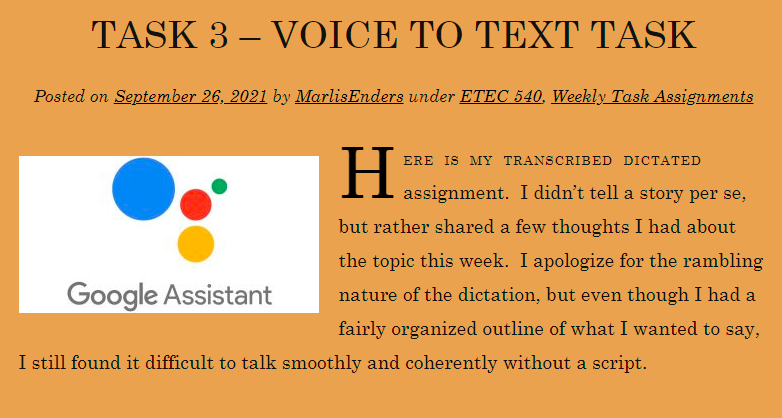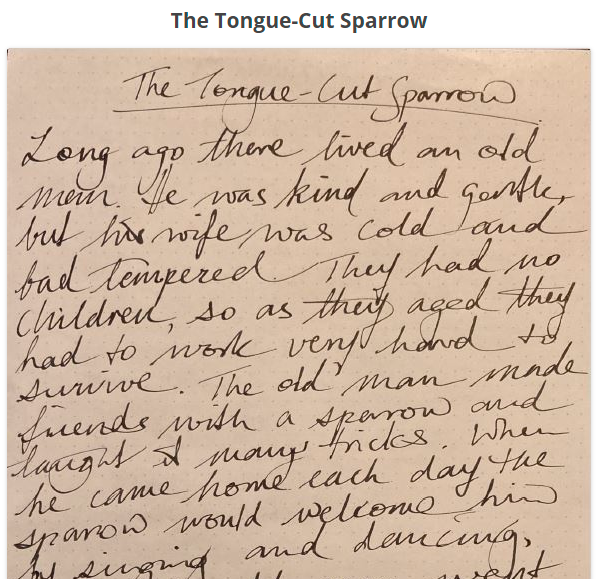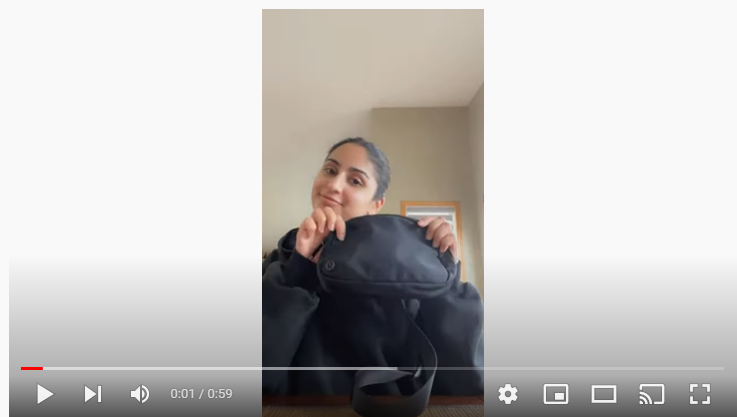Richard’s Website:https://blogs.ubc.ca/richard540/2021/09/19/task-1-whats-in-my-bag/

There are a few similarities between Richard and my tasks #1. We both discuss the bag we use on a daily basis for work. We have some very similar items that speak possibly to the similar culture and jobs we have. Richard works as a part time lecturer and educator at UBC, while I am a teacher at a high school. Items that connect here are things like our laptop and pens/highlighters. Both of these pieces of technology speak to our use of text in our job. The laptop has become a very important teaching tool to share text and ideas in multiple modalities with students.
One of the major differences in Richard and my projects is the way we chose to display and represent our information. I simply showed a photo of my bag and spoke to each item through written text. Richard used a mode of communication that I feel was much more personalized. He used images that were voice over with him explaining the significance of each object. Whenever someone can use their own voice to tell a story or explain something, I feel as though the point of the story comes across so much stronger and clearer. Richard also included an embedded video of himself speaking to each item. These videos again add personalization and create a clearer understanding of each explanation. If the point of this task was for us to get to know each other, I feel as though Richard’s choice of text did a far better job than mine.
By listening and learning through Richards’ video I reflected a lot of the difference between using a video and using written text. There is far more to be interpreted when reading text and written text needs to be careful in how they design the text in order to convey things like importance. When someone speaks to something they are passionate about, you can hear it in their voice. You cannot necessarily do that through written text. For example, when Riachrd discusses the significance of some of the food items he has chosen, he also discusses how food relates to culture and how he loves to extend his cultural knowledge. The passion in exploring various cultures and food is very evident in his voice. Without listening to him explain this I might not otherwise be able to have picked up on how much of a passion he has for this.
I also looked through Richard’s Blog and it reminds me of mine in some ways. It’s fairly easy to navigate as there are not many menus. This may become more muddled as the course progresses. You can access all assignments using the menu of recent assignments posted on the right side. In terms of aesthetics, again it is similar, but reminds me that perhaps adding a bit of color or relevant images may help peak the readers interest. A page full of text is not super engaging. Text can appear or not appear to be engaging based on first glance. First impressions for many versions of “text” today may convince people to read it or move on. Back in the days where books dominated as the form of text where most people got their information, you may have said “you cant tell a book by its cover”. The covers sometimes had a picture that represented the book well, and sometimes they didn’t. While the “covers” of Richard’s and my blog might not reflect the rich nature of the typed text, people will judge based on its appearance. Today’s world of flashy, attention grabbing media draws in viewers/readers. Adding a little pizazz to Richard and my very grey background could help enhance the reader’s experience.





